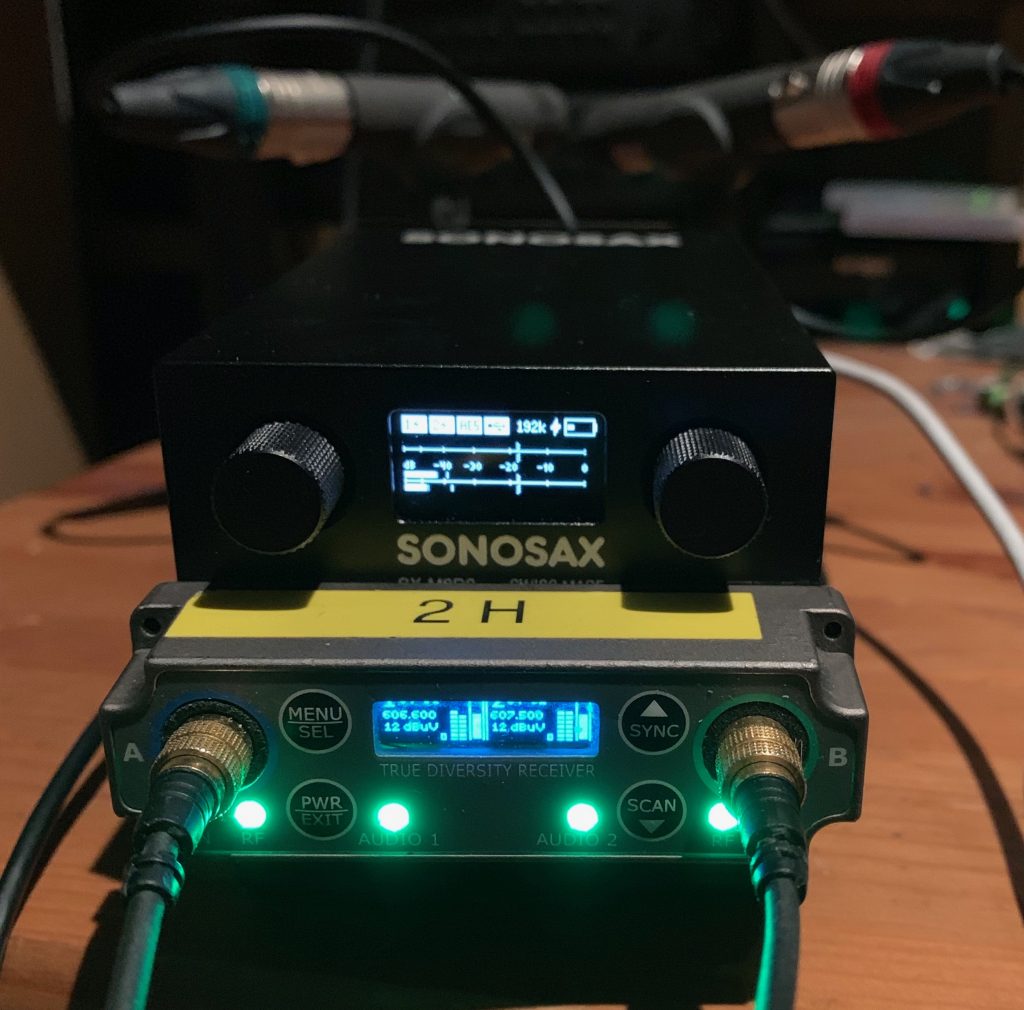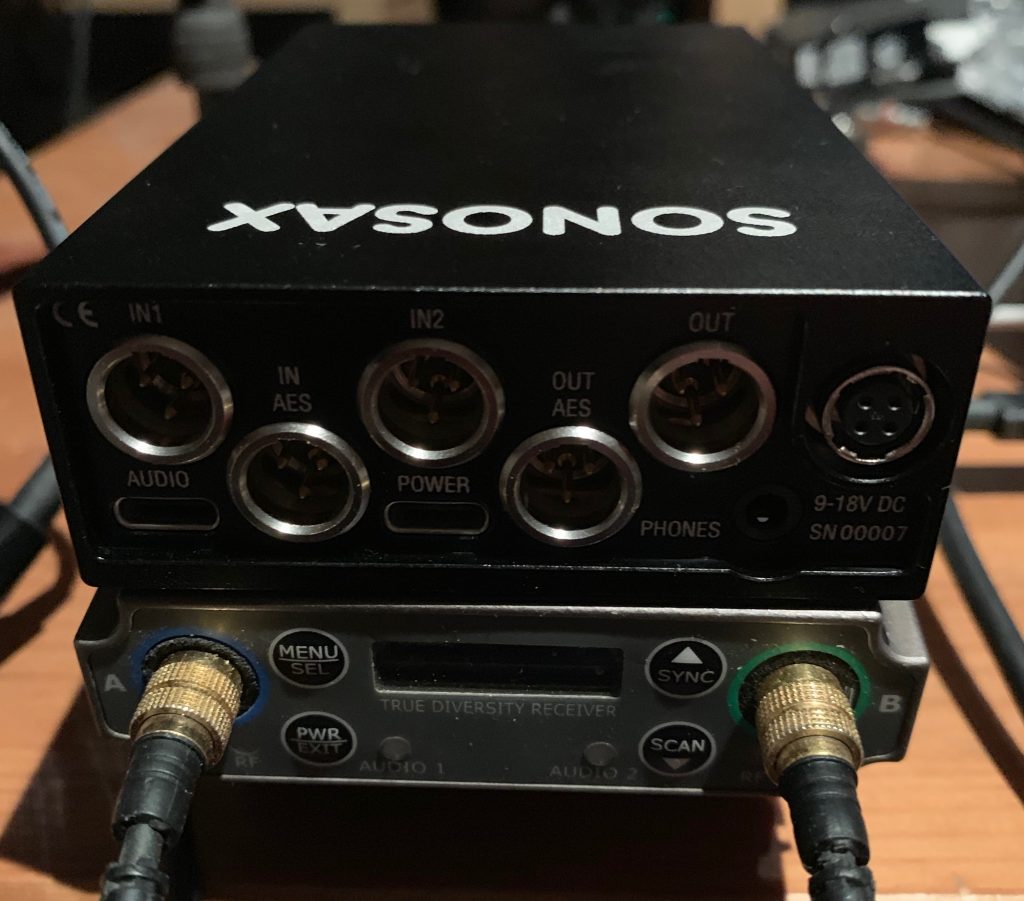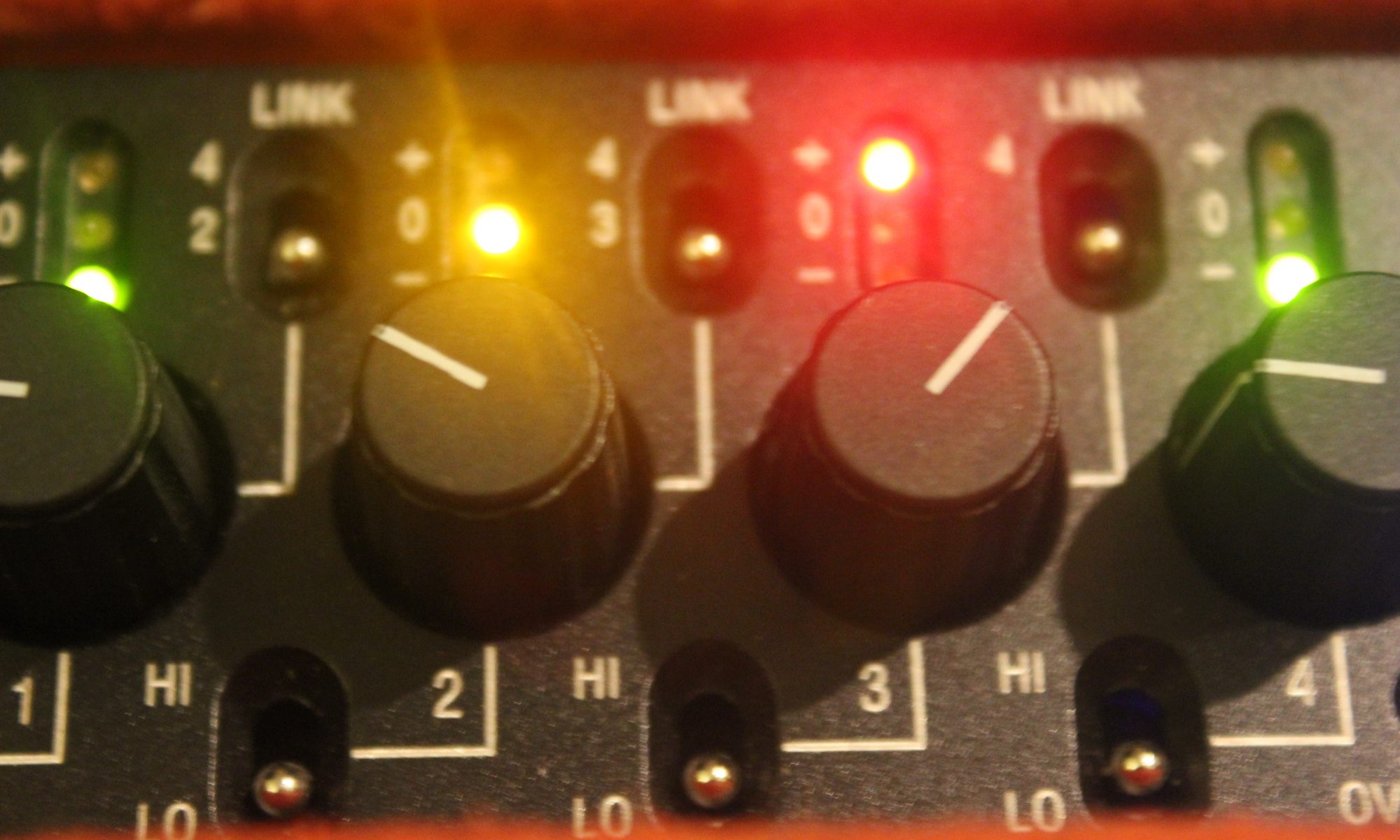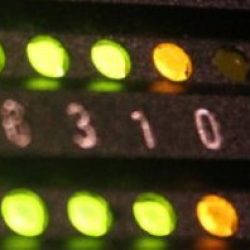Sonosax have offered me a pre-release SX-M2D2 for beta testing, I’ve had a few days to poke around it and try to find where it falls over, so this doesn’t happen in the production version.

What is it?
On the Sonosax website, it’s placed under ‘preamplifiers’. It is a 2 channel preamp, using the current R4+ / AD8+ style preamps with dual ADC, which give you a lot of clean gain. Personally, I really like Sonosax preamp design- they’re very clean and seem to add less noise than almost any other design I’ve heard. For the analogue purists, the dual ADC is an integral part of the preamplifier design, so it has to go into the digital domain. The SX-M32 or SX-M2 may be a good alternatives if you want to stay analogue and just want a preamp.
However, there are also other connections: an AES input and output, supporting both AES3 and AES42 and USB-C in and out (as a 2×2 interface) and it’ll run up to 192kHz, for fx recordists, audiophiles and bats.
There is also a 2 channel unbalanced output (on TA3) and a headphone amp, which sounds very clean and is happy driving 250ohm headphones
It’s a very small device, but feels quite weighty and sturdily built. I did have thoughts of putting it on a boompole, but it’s a bit too substantial for that.

Digital bits
This is where it gets interesting and makes it far more than just a preamp. Software-wise there’s actually quite a lot going on, there’s a full routing matrix and mixer. Knobs are assignable to a number of functions with turns, short presses and long presses. Similar thinking to how routing works in the R4+ is applied here, with inputs and outputs routed in pairs and with 4 assignable presets. Different routings are possible on all inputs and outputs, either going via the mixer or direct from inputs.
Despite the complex routing possibilities, the menus are clear and reasonably ‘flat’, only running 3 layers deep for some of the more advanced settings. They’re generally navigated with the knobs with ‘forward’ and ‘back’ with short presses and the entire screen and knobs can be flipped.

What’s it useful for?
Initially it seemed like an add on for the R4+ ecosystem, simultaneously adding 2 more preamps and analogue outs in a small box, running in and out.
It seems like a very good way for production sound mixers using other manufacturers’ equipment to get access to Sonosax sound for cabled booms, where 2 preamps is usually enough. It also allows them to get AES42 as an input- it’s also capable of adding lots of digital gain to these signals, which users of some other equipment have found lacking.
It’s a 2×2 audio interface with AES3 in and out, so allows direct digital interfacing with a computer (or even a smartphone!) for playback, processing or recording direct to the device. It can even be a very expensive headphone jack adapter, for those who demand high quality music playback on the move.
There are a few small hardware recorders which can interface over AES3 and record timecode stamped files, making a very compact additional recorder.
Phone recording
Having a bit of a look at various bits of phone recording software, I’ve found that Apogee Metarecorder for iOS is possibly the most suitable for production sound. It’ll talk to Timecode Systems’ Ultrasync Blue over bluetooth and receive accurate timecode. Cable wise, I’ve found the neater apple lightning to USB-C cable doesn’t work, but the ‘camera connection kit’ does, I think it requires a USB host port.
Powering
We have another battery system here. It’s got a single 18650 Li-Ion cell- you may not have heard of these, but they’re some of the most common batteries in the world. They’re used in NP1 and other Li-Ion battery packs, such as the 2054 format smart batteries. They’re also in a lot of e-cigarettes, so you can buy them from ‘vape shops’, which seem to be everywhere now. It’ll charge the battery over both a USB-C input or 9-18VDC in on the hirose input, so can work with both consumer phone batteries or professional sound bag distribution systems.
Field mixer?
Given the input and routing possibilities, along with being able to pair it with a recording device- I’m wondering if it could effectively be used like a 4 channel field mixer with recorder, running a pair of radio mics into the AES3 in, mixed to the right channel on the knobs and a boom on the left out. At the moment the software doesn’t quite allow this, but possibly could with a few tweaks. It would be possible to balance the unbalanced outs, and run a mono camera return to the second analogue in and route that to headphones.


Having had a quick look at this the other day, thanks to Richard, it is a very nicely engineered and solid box. I wonder if pairing it with the Lectrosonics SPDR stereo recorder (which could handle the timecode and has AES input) could make it the smallest bag set up currently known to mankind? It would be very useful for the front end of a car rig with a couple of mics requiring phantom power which the SPDR isn’t able to supply.
That’s one of the small recorders I was thinking of, and both can run from internal batteries too. The other is the zaxcom CL or ifb200, which has the screen in a more friendly orientation but requires external power
Gititon !
Very informative run down. Thank you. I have this device on order. Plan to use it with a phone and for line in use with R4+.
Q/ is it possible to do channel linking – possibly even with a gain offset between channels as on the R4+?
It’s certainly possible to link channels- will have to check if it’s possible to do it with a gain offset, I’ve never done that on the R4+. Even if it isn’t currently possible I’m sure it could be with a software update if there’s the demand
You can link Ch1 and Ch2 on one encoder and apply a gain offset in the Input menu.
There have been a few firmware changes since I’ve written this- I’ll have another look and see if there are any changes I need to make
Thanks for the review. But I still fail to see the usefulness of the unit in field production work.
Does it have MS decoding for monitoring? And as an owner of an SX-R4 (the non +), does this work on my aes input and is the headroom greater? It’s a shame it doesn’t record 32bit… but otherwise, beautiful machine.
Yes, it has separate MS routing options for all outputs and inputs. Should work running to AES 7+8 on the SX-R4 (as the R4 takes its clock from there). I’ve had 32bit recording available on the R4+ for years and never actually had to use it for anything
Did you have a chance to try recording into a phone?
Yes, tried it on an iphone running apogee metarecorder and it seemed to work. There’s quite a bit of monitoring latency if listening back over USB though
Hi Richard, slightly old review but seems a good place to ask — could I run two of these into the SX-R4+ to give me a total of 8 mic inputs? One unit connected via analogue line in and the other by AES?
Hi Nic- you can run 2 M2D2 into the R4+
Best way of doing this may be making a custom AES3 lead to the accessory port so both can go in on AES and leaving the R4+ mic amps free
You mentioned there’s quite a bit of monitoring latency if listening back over USB. Is that still the case? Wondering if this device is appropriate for overdubbing music (e.g. in Auria Pro).
There’s always the option of direct monitoring and moving audio tracks to compensate for the latency however.
Sorry for the late reply- the latency would be down to the drivers in computer/tablet. I don’t think it would be better or worse than any other class compliant interface and it is possible to route signals in the M2D2 for direct monitoring
You mentioned there’s quite a bit of monitoring latency if listening back over USB. Is that still the case? Wondering if this device is appropriate for overdubbing music (e.g. in Auria Pro).
There’s always the option of direct monitoring and moving audio tracks to compensate for the latency however.